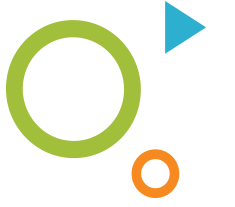Without effective Resource Management, most organizations find themselves struggling to optimize or even maintain a strong project portfolio or achieve their strategic goals. Issues arising from budget constraints, deadlines and employee availability can get in the way of getting the job done. Creating plans and processes around resources can bring organizations improved agility, enhance decision making, increase operational efficiencies, reduce time to market, grow revenue, and many more benefits. This buyers’ guide will help you pinpoint your exact challenges and discover how a powerful Resource Management platform can address obstacles and achieve benefits. Discover whether you’re in the market for a Resource Management platform and the best option for your organization’s needs.
Working Without Resource Management
Consider how many of these common portfolio frustrations your organization currently identifies with:
- Your organization lacks project visibility and transparency, especially across multiple teams.
- You can’t reply to project requests fast enough.
- You have more projects than resources available.
- You need to reduce the number of employees being overallocated and approaching burnout.
- You don’t have the capacity to increase your total number of projects.
- Your portfolio contains several underutilized resources.
- You are working with de-centralized data or have too many data sources that cannot be combined or centrally coordinated as they are in separate platforms or software applications.
- Your portfolio management style is reactive, not proactive.
- You can’t make decisions quick enough due to lack of data, resource visibility and multiple levels of approval required.
- You don’t have the capacity to increase speed to market or products to market.
- Your resource managers aren’t using your portfolio management tool.
If your organization is experiencing more than two of these project portfolio frustrations, it is time to seek out a Resource Management solution.

Top Reasons Why Resource Managers Need a Resource Management Tool
- Integration with HR, legacy PM and task management tools
- Ease of use through familiar UI (user interface)
- Analytics (supply-demand analysis) through dashboards and heatmaps
- Scenario building and What-If modeling
- Visual data for quick visibility of resource utilization
- Auditability on resources and projects
- Collaboration between Project Managers and Resource Managers
- Centralized communications and notifications
- Product support
- Quick deployment

What is Resource Management?
Our ability to finish projects and accomplish our goals is fundamentally determined by having qualified people. Without people, we can’t do work, execute projects, or implement strategy. Resource Management helps us most effectively utilize our people to achieve our business goals. Resource Management helps match our supply of people (resource capacity) with our demand for people (resource allocation – estimated time, FTE or percentage required to support operations or the delivery of key projects). This differs, but aligns with Strategic Portfolio Management, which is the process of creating a strategy for the entire business and building the supporting projects, products, roadmaps and plans to execute that strategy. Strategic Portfolio Management is designed to produce an executable plan. It’s not just about the strategy and important decisions, but also whether and how the work gets done. It’s the portfolio of work that will help your business achieve that strategy’s goals. Resource Management helps business strategy reach the finish line. While Strategic Portfolio Management sets up the focus and strategy well, RM helps execute the strategy with the right people, with the necessary skills, using the correct plan via effective business processes.
Technology Evolving around Resource Management
In the past, many organizations resorted to using spreadsheets for Resource Management, Project Management, and strategy execution. There are now a variety of tools and software that help companies more effectively manage project schedules, tasks, budget, resources and strategy alignment.
To reap the benefits offered by these new applications, companies must ensure their people are investing the time and effort required to routinely update their projects’ status and time frames and maintain an accurate inventory of people, and projects. Project outcomes and metrics should be value focused and consumable. Additionally, Resource Managers and company leadership must be willing to allow the data results to reveal uncomfortable or unrecognized insights about opportunities to improve. Harvard Business Review’s article about the future of AI in Project Management suggests that a “new generation of tools will not only change the technology on how we manage projects, but will change completely our work in the project. Project managers must be prepared to coach and train their teams to adapt to this transition.”

Top Needs Driving Organizations to a Resource Management Tool
- Enhance decision making
- Improve customer relations/service
- Improve business process outcomes
- Create internal/operational efficiencies
- Manage costs
- Reduce time to market
- Drive innovation
- Drive revenue growth
- Improve compliance & risk management
Top Features of Resource Management Tools
- Scalability
- Ease of deployment, administration and maintenance
- Capacity and Resource Management
- Reporting and analytics
- Demand management
- Security and user management
- Usability
- Customization
- Project and work effort management
- Collaborative and social networking
- Adaptive hybrid methodology support
- Reporting to the portfolio
- Integration
Business and Industry Trends Impacting Resource Management
What’s happening around your business can have as much of an impact as what’s happening inside. Changing economic contexts as well as Resource Management trends stand to influence how organizations approach Resource Management and how they select the best fit tools. Read here for more predictions about business in 2024.
Generative AI
Generative AI, or artificial intelligence, will continue to be one of the biggest buzzwords this year. While there are predictions that AI could raise GDP by seven percent in the next decade, it remains to be seen how individual businesses harness the power of AI to improve business operations and customer experiences. As of today, AI in Resource Management looks like matching resources to projects based on role, skills, availability, and demand.
Automation
Automation will help make significant improvements in industrial operations and workplaces. AI, robotics, improved logistics, and supply chain innovations will help bring goods and services to people faster and at lower costs. Automation will also have an impact in workplaces to reduce redundancies and increase efficiency. We’re already seeing how Resource Management technology benefits simple operations by allowing visibility company-wide and aligning work and people to strategic priorities. The automation movement will continue to streamline and improve decision making for companies.
Workplace Benefits and Employee Talent
Businesses will continue to tackle multiple employee concerns including return-to-office mandates, four-day work weeks, skills requirements, DEI (diversity, equity and inclusion) initiatives, and stereotypes around career paths. It will be critical for leadership and Resource Managers to stay on top of projects and various initiatives while ensuring not just resource availability, but their overall fit within the organization.

Selecting Tempus Resource for Resource Management
Task-oriented planning is great, but without understanding the near-, mid- and long-term impact of key skills, roles and individuals, even the best plans are destined to fail. Resource management is the foundation of project delivery and strategy execution. Whether your goal is to innovate, drive transformation, or improve profitability in record time, your teams must become efficient practitioners of Resource Management to experience portfolio success. To do so, you need a specialized solution designed with resource managers in mind.
Tempus Resource provides Resource Managers all the information needed to make the right decision. There are five competencies that Tempus will help organizations develop:
Identifying roles and bottlenecks
Most organizations have one or two bottleneck roles or indispensable people. Identifying them isn’t hard. There are generally weekly discussions about the fact that a certain project can’t start until “Jane is available” or that another project is delayed because “Bill is stretched too thin.” Tempus has a skills feature that will allow you to identify additional people in your organization who have the right set of skills to be trained to supplement your indispensable people.
Balancing the supply of people who can do the work to the projects that require people.
Resource capacity planning is a process of increasing refinement. At the beginning of the capacity planning process, you might choose to work with generic FTE headcount because the staffing of the proposed work is still a guestimate. As the number of potential projects on the list gets reduced and value/business cases get firmed up, it’s possible to increase your specification of the type of individual you will require (A java programmer with supply chain knowledge).
Conducting a What-If analysis to ensure you have the best sequencing to maximize resources.
Once a tentative list of projects has been approved, it is possible to assign named resources to the projects. With named resources, you can tailor your forecasts based on your existing resources and prior resource utilization rates. You can also achieve results sooner by running a What-If analysis to help you rearrange projects into the order that gets them done the fastest.
Using the What-if capability, you can also model different ways to approach your Resource Management plans. What is the impact of starting the maximum number of projects possible at the beginning of the period? What is the effect of staffing projects to ensure projects get completed on time and within budget? The What-if feature puts you in charge with the confidence that you understand the most likely outcome before you start.
Assign the right people to projects, programs, and product teams.
As we discussed, you need to assign the right people to make sure the work gets done. Without effective resource management, there are many areas where things can go wrong, from overspending on a project due to unforeseen labor costs to project deadlines slipping. It’s important to leverage your data on your resources (employees) to understand project and portfolio risks.
Balance workload on an ongoing basis based on actual project data.
Resource/people management is a continuous process. If someone is consistently reporting excessive hours, understand the cause. If a certain project is slipping, get the PMO to intervene. Good resource management improves employee engagement and eliminates burnout.
Impact on Businesses’ Shift to Resource Management
“This all needed to be brought together to foster a communication between projects and functions.”
Siemens Healthineers (formerly Siemens Healthcare) is a leading global medical technology company headquartered in Erlangen, Germany. Dirk Nadler, Project Manager for Research and Development within Laboratory Diagnostics, explained the need for a Resource Management platform. “In the old days, there was very isolated planning in Excel sheets. Every function worked on its own—the annual budget planning, for example in isolation from the rest of the team and plans never worked together. They ended up planning with different assumptions and different goals. That’s when I could see what the real problem here was that there was not enough collaboration, not enough transparency, and there was no system which utilizes who was working (and how much) on a project. This all needed to be brought together to foster a communication between projects and functions.”
Siemens recognized that implementing a Resource Management platform would also mean real cultural change for his organization. “You can put it into an organization in two ways: you can treat the tool as a problem-solver: put it in, don’t change anything, just move away from Excel to this central tool. Don’t change the attitude to workload, how you make decisions, and you will have more visibility and a little impact. Or you could go further and change the culture of how you conduct your resource management and how you make decisions: build better cornerstones and a strong framework, discover how people handle certain situations and support them. If you implement like this, then the solution is going to hold real value.”
To read more about how Tempus Resource helped Siemens Healthineers with their resource management, read the full case study at here.


Domtar’s Need for Roadmapping and Capacity Planning
“Tempus allows us to uncover where to focus.”
Domtar is the largest integrated manufacturer of uncoated freesheet paper in North America and a leading manufacturer of paper-grade, fluff, specialty pulp, and air-laid nonwoven materials who employs over 7,000 people worldwide. Domtar’s IT PMO (program management organization) team, supporting a host of projects across the enterprise, already had mature processes in place for capacity planning, but was struggling to scale up their manual tools and spreadsheets with growing internal demand for their department. Mimi Raza, Domtar’s IT Capacity Manager, explained, “Tempus gives our people the ability to manage their own time effectively because it gives them line of sight on what’s coming, allows them to prioritize their work and collaborate and get feedback. That allows our PMO to focus on and better oversee workload management.”
Tempus Roadmaps help Domtar’s IT PMO focus its capacity planning efforts. Raza comments, “Roadmap is not just a view, it’s what it combines and the dimensions that are added to it. It’s not just a timeline view of our projects. The layer on top of that is, in the time increments, an overlay of your capacity issues. At a very high level, it allows you to pinpoint and focus a project portfolio, and then you can have conversations just about that period and that project instead of opening a giant capacity report and asking, ‘What do you want to see?’ It allows us to uncover where to focus.”
To read more about how Domtar was able to gain more insight into their capacity planning with Tempus, read the full case study here.


Effective Resource Management for Sierra Nevada Corporation
“We are trying to optimize the utilization of our
employees across programs.”
Sierra Nevada Corporation (SNC) is a leader in innovative, advanced technology solutions and open architecture integrations in aerospace and national security. The company, with more than 5,000 employees worldwide, needed a solution to help manage projects and employees across multiple business units including engineering, IT, and program management. SNC also had to ensure employees’ time was being allocated properly to keep pace with various projects, including government contracts (“programs”) with firm deadlines. Most of their analysis was managed with spreadsheets, which proved to be very cumbersome and difficult to maintain. SNC leaders knew this was ineffective and started searching for a solution that could provide them with information needed at an enterprise level.
Tempus has elevated the way SNC monitors and reports on their resource capacity demands. They use Tempus to have a one-stop location by which various programs can present their needs going forward and match them up with the resources that the company has available from both engineering and IT. Joe Maguire, Director of Engineering for Systems and Specialty Engineering for Mission Solutions and Technologies at SNC, explains, “We use Tempus to provide that picture of what our employees are doing and use that to examine projections that we’ll need for staffing going forward. We are trying to optimize the utilization of our employees across programs.” SNC’s engineering team has seen multiple benefits since transitioning away from relying solely on spreadsheets. Tempus reporting is helping the team make sure they are meshing up personnel with the program needs. It helps them determine if staffing levels are adequate and make decisions on whether to hire more people or try to get additional help from other business areas or business units within the company.
To read more about how SNC is able to manage their resources with Tempus, read the full case study here.
Tempus Resource has been recognized as one of the leading Resource Management platforms to help businesses execute strategy. In 2023, Tempus was included in the Gartner® Magic Quadrant™ for Adaptive Project Management and Reporting for the second year in a row. With a 5.0 rating (out of a possible 5.0) on Gartner Peer Insights, Tempus ranks high in all categories including Capacity and Resource Management, Scalability and Usability.
To read more about how Tempus helps businesses implement and execute their Resource Management plans and strategic goals, read this guide: A Guide to Strategic Portfolio Management and Resource Management. Resource Managers and business leaders who are not currently using Tempus but are interested in exploring its features can arrange a demo with the Tempus team by visiting https://www.prosymmetry.com/schedule-demo.



